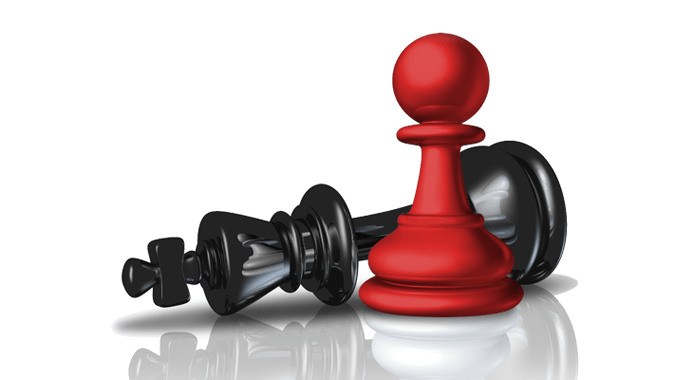
The Science of Brand Positioning
Branding and positioning are different, and often confused or used interchangeably. But they ARE different. So, what is positioning?
The quick answer is that positioning is a foundational strategic approach to crafting the messages your brand or agency puts out there to your various audiences to hopefully compel them to see your brand favorably as compared to your competition. Positioning UNDERLIES branding, which is the practice of putting your positioning into action through your marketing channels, messages, visuals and actions.
Branding that is not built upon a compelling Positioning Platform is, to be blunt, almost always deficient. You have to build the house first, before you hang the curtains. Positioning is the ‘strong foundation’ for the house that is your brand.
What Is Positioning?
Simply put, ‘positioning’ is the science of controlling consumer and client decisions about, and behaviors towards a specific brand by influencing their beliefs about your brand and your competitors.
Often inaccurately referred to as branding, a brand’s persona, and other terms, positioning is the single most important element that assures brand success. Done right, brand success is virtually assured. Done wrong, or not done at all will ensure failure.
Positioning has a major impact on all aspects of advertising and marketing, including PPC, SEO, display ads, social media and website content, as well as virtually every channel and manifestation of messaging. The concept of brand positioning is widely accepted as the single most important factor in determining a brand’s ability to establish itself as the preferred brand within any given niche or category in the mind of the target consumer or client. It is the basis of all successful strategic planning undertaken on behalf of brands by the world’s leading advertising and marketing agencies as well as by the brand owners and smart agencies themselves.
The premise of why creating a compelling brand positioning is so critical is guided by the following determinants:
For every product or brand in any category, consumers assign a mental preference ranking. This results in the consumer believing that brand X is the ‘best’ brand for them in the category being considered, or the brand that most fulfills their needs. For example, John may believe that ABC is the best toothpaste for him, and Jane may believe that XYZ is the best toothpaste for her. It follows that John will buy ABC brand toothpaste, and Jane will buy XYZ brand toothpaste. If everyone believed that ABC brand toothpaste was the best for them, ABC brand toothpaste would be the biggest selling and most successful product in its category. This applies exactly the same way to your company, brand or agency.
The Objective Of Positioning
The objective of any brand is to attain the ‘Number 1’ position in the mind of the largest number of target consumers or clients, thus making the brand the largest selling brand in that category, and generating the highest revenue.
While there is ample room for a top 1, 2 or 3 brands in any category to be hugely successful, there can only be ONE number 1 brand; and positioning is the science that helps a brand achieve this state. In the marketing journey to become the number 1 brand in a category, positioning is the most powerful marketing technique to create competitive advantage.
Become The Number 1 Brand In Your Niche
There are only TWO ways to become a number 1 brand in any category:
- Displace the incumbent number 1 brand, or…
- Create a new category, which by default makes you the number 1 brand.
The most successful brands in every imaginable niche have always opted for the second path: allow others to spend the large dollars required to pave the way and then create an ancillary category – which we call a ‘Category Class‘ – with an entirely new, bold and disruptive positioning that generates massive competitive advantage.
Instead of being a small fish in a big pond, it’s much more successful to create a new pond (and thus be the biggest fish in that pond), and then grow the pond – forcing other brands to go on the defensive, while you take an increasing share of their market away from them.
And it’s all based on the challenge of controlling consumer beliefs, which in turn controls their buying behavior.
Influence Perceptions To Control Beliefs
Consumers and clients BEHAVE based on their BELIEFS:
Vegetarians don’t eat meat, because they BELIEVE it’s not right (either for health reasons, or for animal cruelty reasons), or for some other reason.
Buyers of hybrid or electric vehicles do so because they BELIEVE they are better for the environment, or for financial reasons, or both.
Consumers make repeat purchases of their favorite brands because they BELIEVE these products work just fine for them; there’s no urgency or need to change. Clients engage agencies because they BELIEVE these agencies will solve a need or pain point, or fulfill a desire that other agencies can’t.
But beliefs are almost impossible to change once they are fully formed. So how does a brand come to control beliefs?
Beliefs don’t just happen… they are built on a series of user experiences, consumer education, and marketing of messages called INFLUENCE MOMENTS. Influence moments aggregate to eventually form beliefs. If our objective is to control or direct beliefs, our first task has to be to understand what generates an influence moment.
The answer is one level lower down the scale, with micro-signals – PERCEPTIONS – that consumers are exposed to both intentionally and accidentally. Perceptions add up and create influence. Influences add up and form beliefs.
Perceptions are relatively easy to influence, and when deployed smartly, the science of positioning and de-positioning can both Influence a consumer in your direction BEFORE they have formed a belief in favor of one of your competitors, and/or create DOUBT or DISSATISFACTION (the ONLY 2 factors that have the power to change a formed belief) about the competitor’s product or service.
